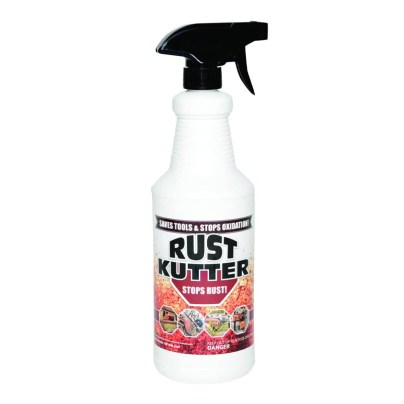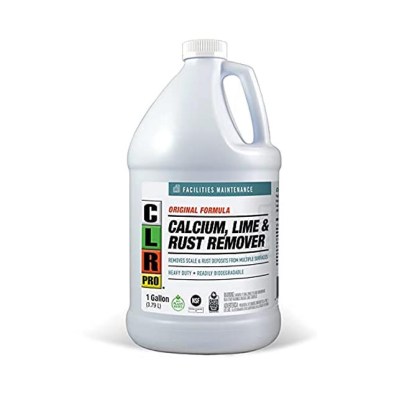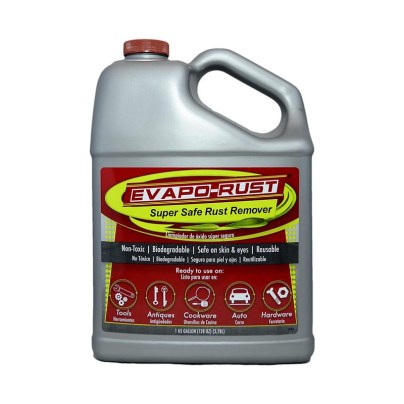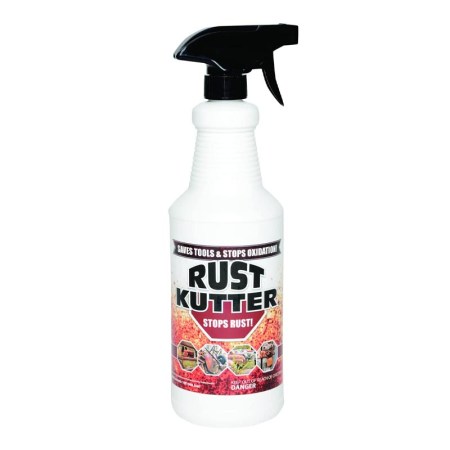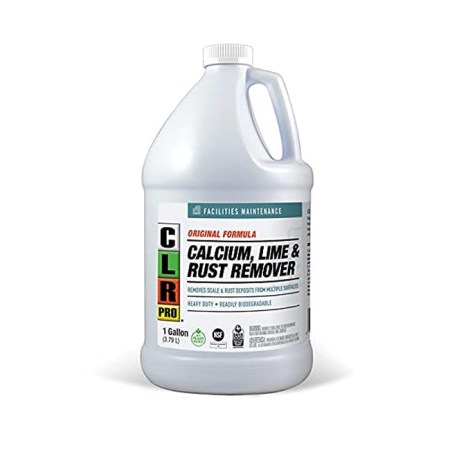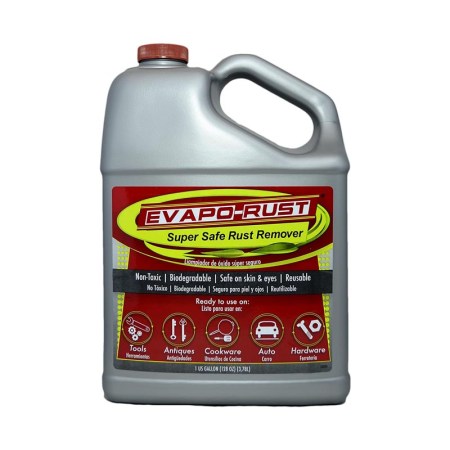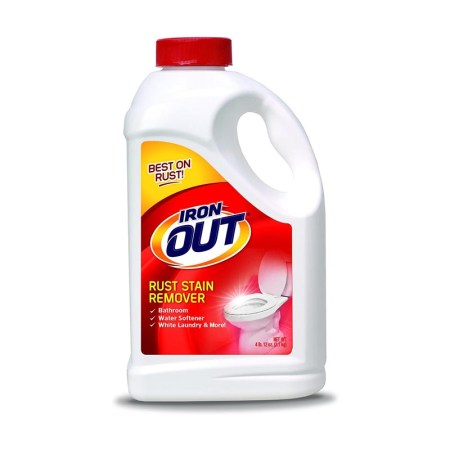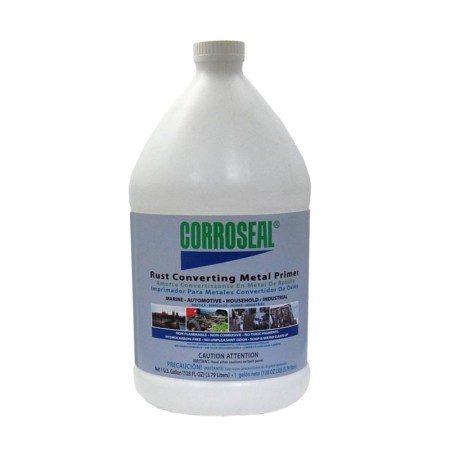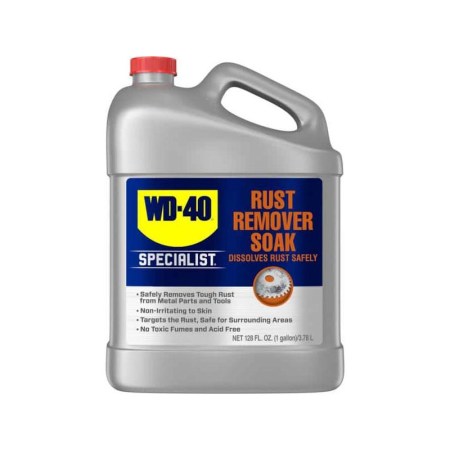We may earn revenue from the products available on this page and participate in affiliate programs. Learn More ›
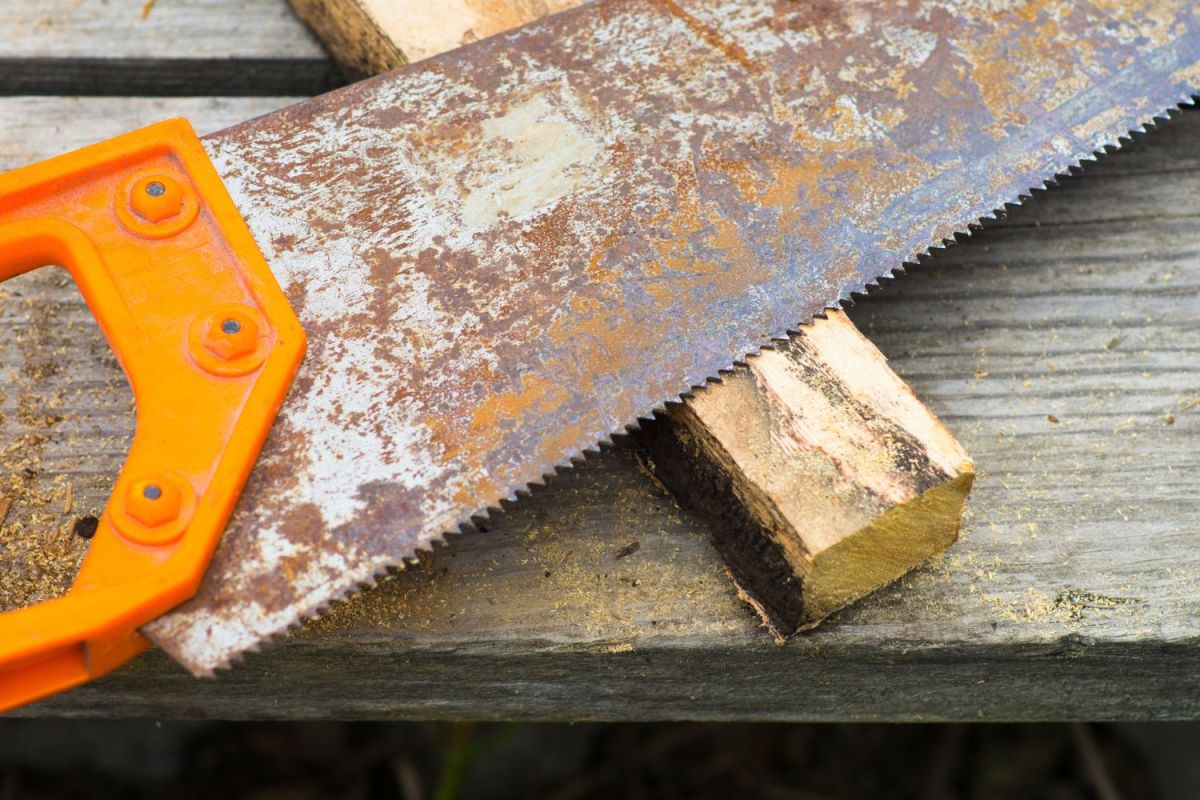
When elbow grease fails to remove rust, it’s time to reach for a rust remover. But with so many on the market, each with different strengths and drawbacks, which is best?
There are acid-based rust removers out there, as well as options that rely on advanced chemistry to either remove rust or convert it to a different, noncorrosive substance. Keep reading to learn how the various types of rust removers work, and check out our top picks to find the best rust remover product for your job.
- BEST OVERALL: Rust Kutter
- BEST MULTIPURPOSE: CLR PRO Calcium, Lime and Rust Remover
- BEST FOR TOOLS: Evapo-Rust ER102 Super Safe Rust Remover
- BEST FOR HOUSEHOLD NEEDS: Iron OUT Powder Rust Stain Remover
- BEST FOR HEAVY DUTY: Corroseal Water-Based Rust Converter Metal Primer
- BEST FOR CARS: WD-40 Specialist Rust Remover Soak
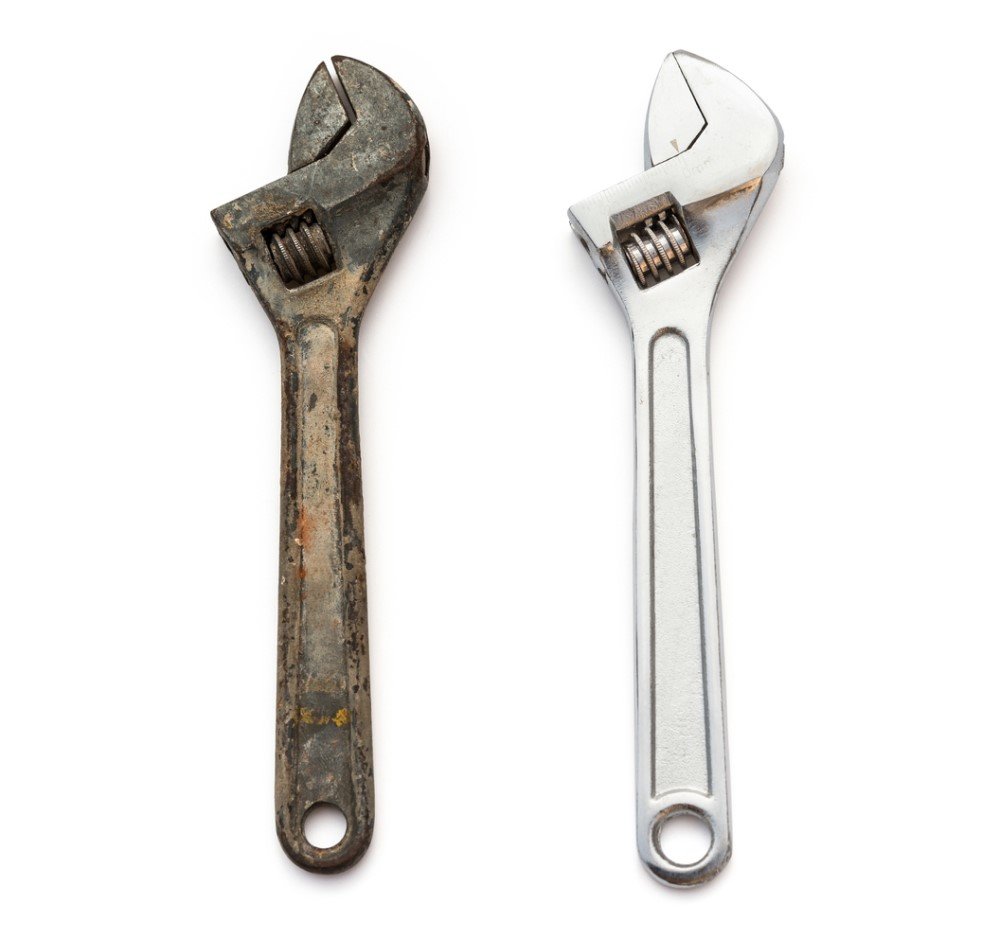
Before You Buy Rust Remover
Before attempting the chemical process of rust removal, it helps to understand just what rust is in the first place. Basically, iron corrodes when it is exposed to oxygen and moisture (water or humidity), the technical term for the process being oxidation.
When iron molecules are oxidized, they form an orangey-red residue (rust) on any surface containing—or in contact with—iron, including clothes, tools, household faucets, shower caddies, and the chrome fixtures on cars and bicycles. Rust stains are difficult to remove because of their bright color and stubborn resistance to typical cleaners like bleach and soap, which is why we’ve rounded up our top picks for the best rust removers on the market.
Rust removers aren’t good for delicates like wool or silk, but for most other surfaces, you’ll find your solution below.
Types of Rust Removers
The best way to remove rust will vary depending on the type of material you’re working with, but if you start with the correct type of rust remover, you’re bound to get great results. The most common methods involve commercial-grade chemicals that eat away at rust buildup and stains, like acids and petroleum-based solvents. Here are the major types of rust removers and general guidelines for using them.
Acids
This category includes nitric acid, acetic acid (white vinegar), phosphoric acid, hydrochloric acid, sulfuric acid, muriatic acid, oxalic acid, and citric acid. The typical percentage of acid in a rust remover is about 30 percent—the maximum amount that can dissolve in water and serve as a cleaning agent. Though effective and fast, usually working within minutes of application, acids emit harsh chemical fumes, so you must use them in an outdoor or well-ventilated space and wear protective gear (goggles, face mask or respirator, and rubber gloves).
Acids also incur the risk of surface damage due to corrosiveness. Naval jelly, a phosphoric-acid-based, caustic rust remover, is suited for heavily rusted iron or steel but should not be used on delicate materials like fabrics or on aluminum, chrome, stainless steel, cement, fiberglass, marble, plastics, or painted surfaces (it will remove paint). On the plus side, naval jelly gets rid of rust buildup in about 5 to 10 minutes, and any excess product can be removed and the area cleaned with water.
Sodium Hydrosulfite
Sodium hydrosulfite is an active ingredient often found in powdered rust removers. This salt compound is effective in removing rust stains from fabric. Research from the U.S. General Services Administration also shows its power to remove rust stains from concrete, limestone, and marble. In home cleaning products, sodium hydrosulfite eliminates the need for scrubbing away stains and can be used in bathrooms, toilets, kitchens, and washing machines. Expect rust stains to fade within 5 to 30 minutes after application.
Petroleum-Based Solvents
Petroleum-based solvents are found in products like WD-40. While not as corrosive or toxic as acids, these products often use pressurized gases for dispersal. Note that pressurized gases are flammable and may have respiratory risks. You can expect to wait up to 24 hours for these products to take full effect.
Chelating Agents
Newer rust removers are nontoxic, acid-free, and eco-friendly, relying on a process of chemical chelation. The product’s molecules bind to the rust particles, making it easier to wipe away rust without damaging surrounding materials. Typically, these products require you to soak rusty items for a minimum of 30 minutes to overnight—time well spent that results in rust-free, stain-free tools and surfaces.
Rust Converters
When there is too much rust for either a chemical or chelating product to completely remove the buildup, use a product that converts rust into a stable black coating that serves a dual purpose: it protects the original surface and works as a primer for oil- and epoxy-based paints.
This type of rust remover is handy but doesn’t work on stainless or galvanized steel (the best rust remover for metal is an acid, sodium hydrosulphite, or petroleum-based solvent). However, rust converters are suitable for any iron or steel object that can be repainted, like garden tools, lawn equipment, fences, and iron railings. After applying, wait 24 hours before applying a second coat and a full 48 hours before painting over the rusted area.
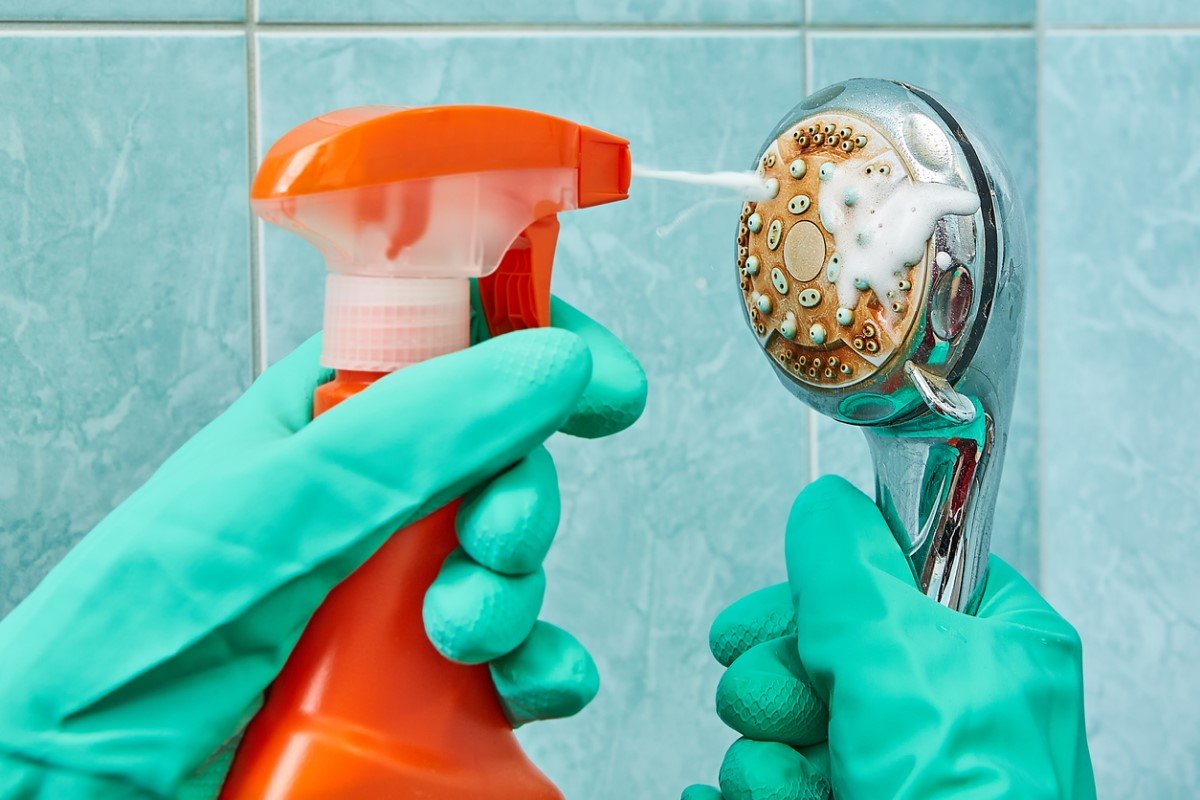
What to Consider When Choosing the Best Rust Remover
There are dozens of rust removal products and rust converters on the market. It can be difficult to know which is the best rust treatment for a particular material, and getting it wrong could result in as much harm as the rust is causing. The following section looks at application methods, effectiveness, and safety in order to help you make an informed choice.
Form
Naval jelly usually comes as a ready-to-use gel. Spray-on rust remover can also be supplied as a thin gel but is frequently a liquid. The advantage of the former is that it clings better to metal surfaces. Rust converters are often supplied in spray bottles but also as aerosols. The latter are very convenient, but most are comparatively expensive.
Liquid rust removers are common and often very economical. Depending on type they can be brushed or wiped on with a rag or used with a spray bottle. Other liquid rust removers are intended as a soak. Simply find an appropriate container, fill it, and immerse the item to be cleaned. This requires little or no effort, but the cleaning process can take longer.
Rust remover powder is another cost-effective option. These are usually used for fabrics and ceramics rather than for metals. Some also work on concrete and cement. The powder can either be applied directly to the rust stain with a sponge or cloth, or dissolved in water. The resulting solution can be rubbed on and rinsed off or used as a soak.
Strength and Future Protection
Naval jelly is very strong but also caustic and quite unpleasant to work with; there are plenty of alternatives that are safer and easier to use. They can also be equally effective, though they take longer to work. We’ll look at relative timings in a moment.
With minor rust stains on clothing and other fabrics, strong rust removers need to be avoided. The same may be true of rust on kitchen and bathroom ceramics. It’s important to choose the most appropriate product rather than the strongest. Our top picks offer a variety of examples.
Future protection relates to rust removers and rust converters used for cars, tools, and other hardware. Some manufacturers claim that their product prevents rust from reforming, ever. This is often true for rust converters that have changed the chemical composition of the rust. Rust removers often state a specific period of ongoing protection. However, any untreated steel will rust eventually, so some kind of paint or other coating will need to be applied to prevent this.
Cleanup and Drying Time
Once the rust remover has been applied, there will be a waiting period while it works. This can vary from 5 or 10 minutes, in the case of the strongest rust removers, to several hours in other cases. Following the correct procedure is vital. Left too long, these products can cause damage to the underlying structure, whether it’s metal, ceramic, or fabric. Sometimes two applications are required. It is better to do that than risk damage by leaving an item for too long.
Once the suggested time has elapsed, the residue may need to be removed. With rust converters, however, this is often unnecessary. Rust remover liquids and powders often need to be rinsed in water. Care needs to be taken here, as the resulting waste might be unsuitable for simply pouring down the drain. The product manufacturer should provide instructions. It’s important to follow them, as incorrect disposal could be illegal.
Safety
Very strong rust removers are acidic; failure to read instructions can result in sickness or injury. They can not only burn skin but also produce fumes that can irritate eyes and airways.
Less powerful rust removers might also require caution, and the use of gloves and goggles is often recommended. It may also be advisable to work in a well-ventilated area.
It’s important to understand that a rust remover that is environmentally friendly isn’t necessarily harmless. While nontoxic rust remover is available, details need to be checked carefully. Some are toxic in liquid form but safe when dry, for example. It is absolutely vital to read the manufacturer’s directions to avoid the risk of burns, respiratory irritation, eye injury, etc.
Our Top Picks
Having had the chance to read about various technical aspects of different rust removers, it is now time to look at some practical examples. The following represent a broad spectrum of possible solutions, allowing you to quickly find the best rust remover for a particular task.
Best Overall
Rust Kutter
See ItAn easy-to-use spray-on product, dual-purpose Rust Kutter converts rust into a primer-ready coating. It dries in about 30 minutes, after which rust can be wiped clean. It’s effective on a variety of interior and exterior surfaces, including tools, tile, marble, and masonry.
This rust formula is best for items you wish to paint, as converted rust can tinge metals a whitish hue. Do not use Rust Kutter rust converter on surfaces that have already been painted; it can damage or strip the surface. Also note that with phosphoric acid and citric acid as active ingredients, it’s important to wear protective gear while using the product, and it’s equally important to do so in a well-ventilated or outdoor space.
Product Specs
- Type: Liquid spray
- Eco-Friendly: No
- Precautions: Wear gloves, work in a well-ventilated area
Pros
- Converts rusty metal to ready to repaint
- Also works on tile, marble, and masonry
- Use inside or out
Cons
- Full drying may take 4 days
- Can damage paint and plastics
Get the Rust Kutter rust remover on Amazon and at Tractor Supply.
Best Multipurpose
CLR PRO Calcium, Lime and Rust Remover
See ItWith its potent yet nontoxic mix of active ingredients, CLR PRO cleaner is fast-acting, industrial-strength, EPA-certified—and one of the most versatile cleaners for home and outdoor use. The formula utilizes both lactic and gluconic acids, which are less caustic but no less effective than harsher acid-based removers.
It works wonders on rusty tools, outdoor equipment, car parts, stainless steel, plastic, ceramic tile, glass, and fiberglass surfaces and is also a great alternative to ammonia- and bleach-based products on hard water deposits, soap scum, and rusted toilets.
Product Specs
- Type: Liquid
- Eco-Friendly: Yes
- Precautions: Wear gloves
Pros
- Economical multipurpose cleaner
- Plant-based, biodegradable formula
- No phosphates, ammonia, or bleach
Cons
- Will not remove heavy deposits from metal
- Not for use on synthetic stone/composite sinks
Get the CLR rust remover at
,
, and
.
Best for Tools
Evapo-Rust ER012 Super Safe Rust Remover
See ItOne of the first rust removers on the market, this product from Evapo-Rust is water-based, environmentally safe, nontoxic, and noncorrosive, containing no acids to irritate your eyes, skin, or nose. It’s also safe to use on non-rusty steel, plastics, PVC, cast-iron cookware, toys, and most painted surfaces that may be in contact with rusty metal hardware.
To remove rust fully, soak items in the solution overnight. If a surface cannot be fully immersed, soak a rag in the product and apply the rag to the rust stain for 24 hours.
Product Specs
- Type: Liquid
- Eco-Friendly: Yes
- Precautions: None
Pros
- Water-based, nontoxic formula
- Safe for skin and eyes
- Just soak, no scrubbing necessary
Cons
- Won’t harm plastics, rubber, etc., but may not remove rust stains
- Requires additional finishing to prevent rust reappearing
Get the Evapo-Rust remover at Amazon, The Home Depot, Walmart, and Tractor Supply.
Best for Household Needs
Iron OUT Powder Rust Stain Remover
See ItGentler than acid-based formulas, Iron OUT Powder Rust Stain Remover contains sodium metabisulfite and sodium hydrosulfite—crystals that are proven rust erasers. This septic-safe powder works for numerous household needs, including bathroom, kitchen, and laundry.
For instance, Iron OUT Powder Rust Stain Remover removes rust buildup in water softeners, helping maintain their performance, and similarly, the product can extend the life of your washing machine. If you live in an area with hard water and high iron content, consider keeping a bottle handy to banish corrosion not only on (and within) plumbing and appliances but also from clothing and fabrics.
Product Specs
- Type: Powder
- Eco-Friendly: No
- Precautions: Wear gloves, work in a well-ventilated area
Pros
- Multisurface rust remover
- Use indoors and out
- Septic safe
Cons
- Can require more than one application
- Not for colored laundry
Get the Iron OUT rust remover at Amazon, Walmart, and The Home Depot.
Best for Heavy Duty
Corroseal Water-Based Rust Converter Metal Primer
See ItSpecially designed for the marine industry, Corroseal Water-Based Rust Converter Metal Primer is ideal for heavily rusted outdoor equipment. This is not only the best rust converter but our pick for the toughest rust removal projects. Instead of eating away at rust the way acids do, this Corroseal product relies on a chemical conversion process that turns rust into magnetite, a stable black coating.
Many DIYers consider this to be the best product on the market for heavy-duty restoration of such things as patio furniture and trailers. Just brush this water-based formula onto any rusty surface (except stainless steel and galvanized metals) and let it dwell 24 hours until fully dry and cured. Then paint over the magnetite coating.
Product Specs
- Type: Liquid
- Eco-Friendly: Yes
- Precautions: Wear gloves
Pros
- Water-based, noncorrosive, and nonflammable
- Apply with spray, brush, cloth, or roller
- Includes latex primer
Cons
- For ferrous metals only
- Painting required to prevent rust returning
Get the Corroseal rust remover on Amazon and at Lowe’s.
Best for Cars
WD-40 Specialist Rust Remover Soak
See ItNontoxic, industrial-strength WD-40 Specialist Rust Remover Soak is perfect for auto restoration, and it can also be used on large metal outdoor structures like metal swing sets or sheds—making it our choice for the best rust remover for cars. WD-40 claims its formula makes old metal look practically new again—without laborious scraping, chipping, or scrubbing—in as little time as 24 hours. Perhaps best of all, WD-40 Specialist Rust Remover Soak doesn’t give off fumes.
Product Specs
- Type: Liquid
- Eco-Friendly: Yes
- Precautions: Wear gloves
Pros
- Removes heavy-duty rust without scrubbing
- No acids or caustic chemicals
- Nontoxic, biodegradable formula
Cons
- For metals only
- Items may need soaking overnight
Get the WD-40 rust remover at Walmart.
Our Verdict
If you need to convert rust in order to repair vehicles or tools, then Rust Kutter is hard to beat. However, it isn’t pleasant to use, and not safe near kids or pets. CLR PRO is great for removing rust stains from many—though not all—non-metal surfaces and is very economical.
How We Chose the Best Rust Removers
We spent several days on research before arriving at the selections above. It was important to understand the variety of products available and how the different kinds of rust remover work.
Where possible, we tried to select environmentally friendly products that are as safe to use as possible, though in some cases, we had to step outside those boundaries. What we have done is make a representative selection across the market and have included relevant information so buyers can use their own judgment.
Value is another important consideration. While rust removers aren’t particularly expensive, overall cost depends on the area of rust that needs to be treated. Balanced against this has to be convenience. Aerosol rust converters are more expensive, but they are quick and easy to use. We also stuck with well-known brands that have a proven track record.
FAQs
The article above provides a wealth of valuable information about rust removers and converters. Many of the questions that arise have been answered, but for convenience we have covered the most common ones here.
Q: What is the difference between a rust remover and a rust converter?
A rust remover lifts away surface rust and can often be brushed or rinsed off. A rust converter changes the chemical composition of the rust into a stable form that can often be sanded and repainted.
Q: Should I use rust remover or converter?
It depends on the material being treated and what you want to do with it.
For fabrics, tile, and stone and for cleaning metal tools or components, a rust remover should be used. For auto body, machinery, or tool repair, you may want to use a rust converter, although bear in mind the resulting material will not have the strength of the original steel.
Q: How does rust spread?
Moisture and air attack unprotected or damaged metal, and then creep along as the surface deteriorates. If it’s caught early enough, repair and refinishing can usually rectify the problem.
Q: Can WD-40 remove rust?
Standard WD-40 can certainly loosen rust on metal, though results on other surfaces are difficult to predict. We would generally recommend a dedicated rust remover specific to the material being treated.
Q: What is the strongest rust remover?
Choosing the single strongest rust remover is difficult because results depend on the material being treated. Naval jelly is very strong but has to be used with great care. We prefer Evapo-Rust or WD-40 Specialist, which are safer but still hard to beat on tools, hardware, and auto parts.
Q: What is the best rust remover for concrete?
While liquids like CLR PRO can work, the concrete needs to be at least a year old and not colored. Iron OUT has no such restrictions, though it may take more than one application on heavy deposits.
